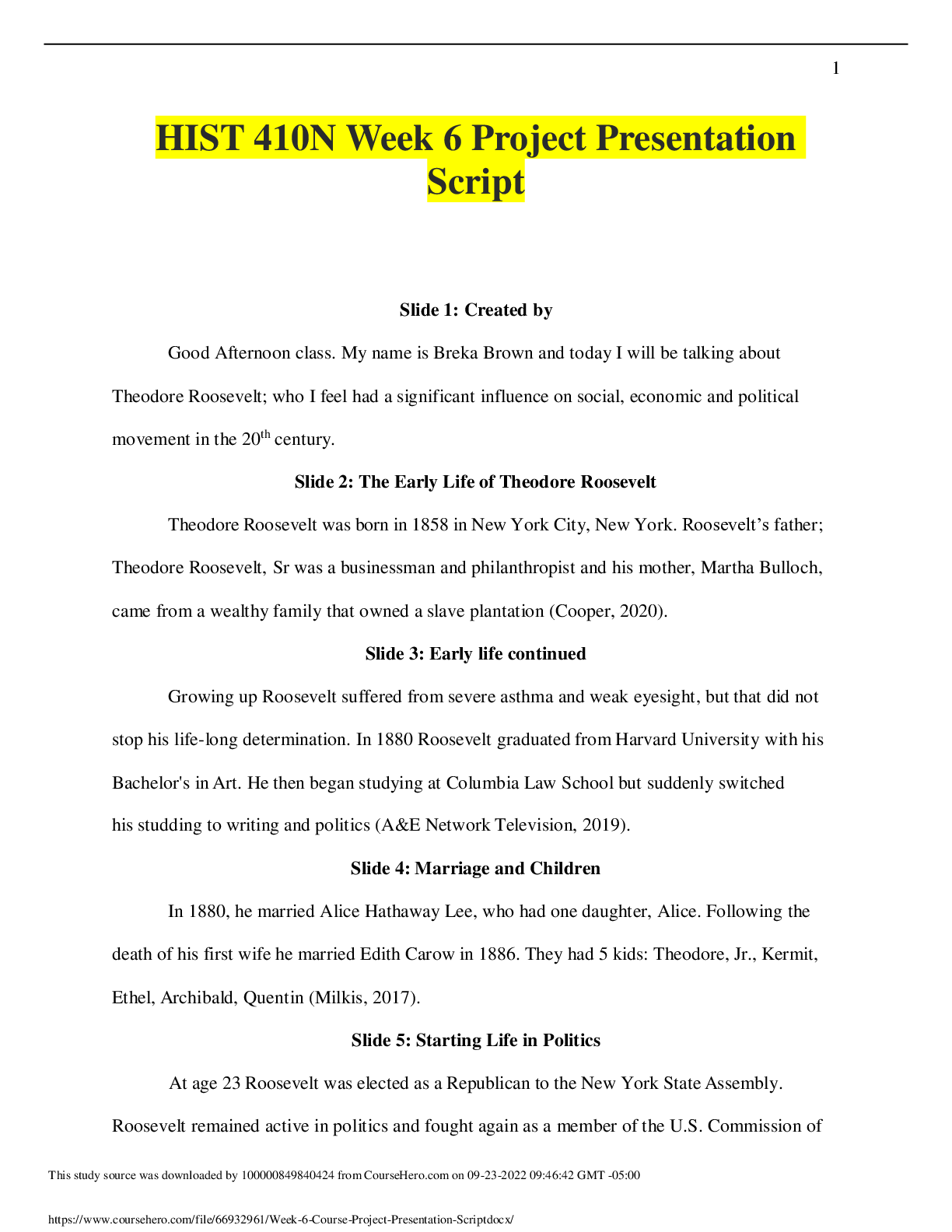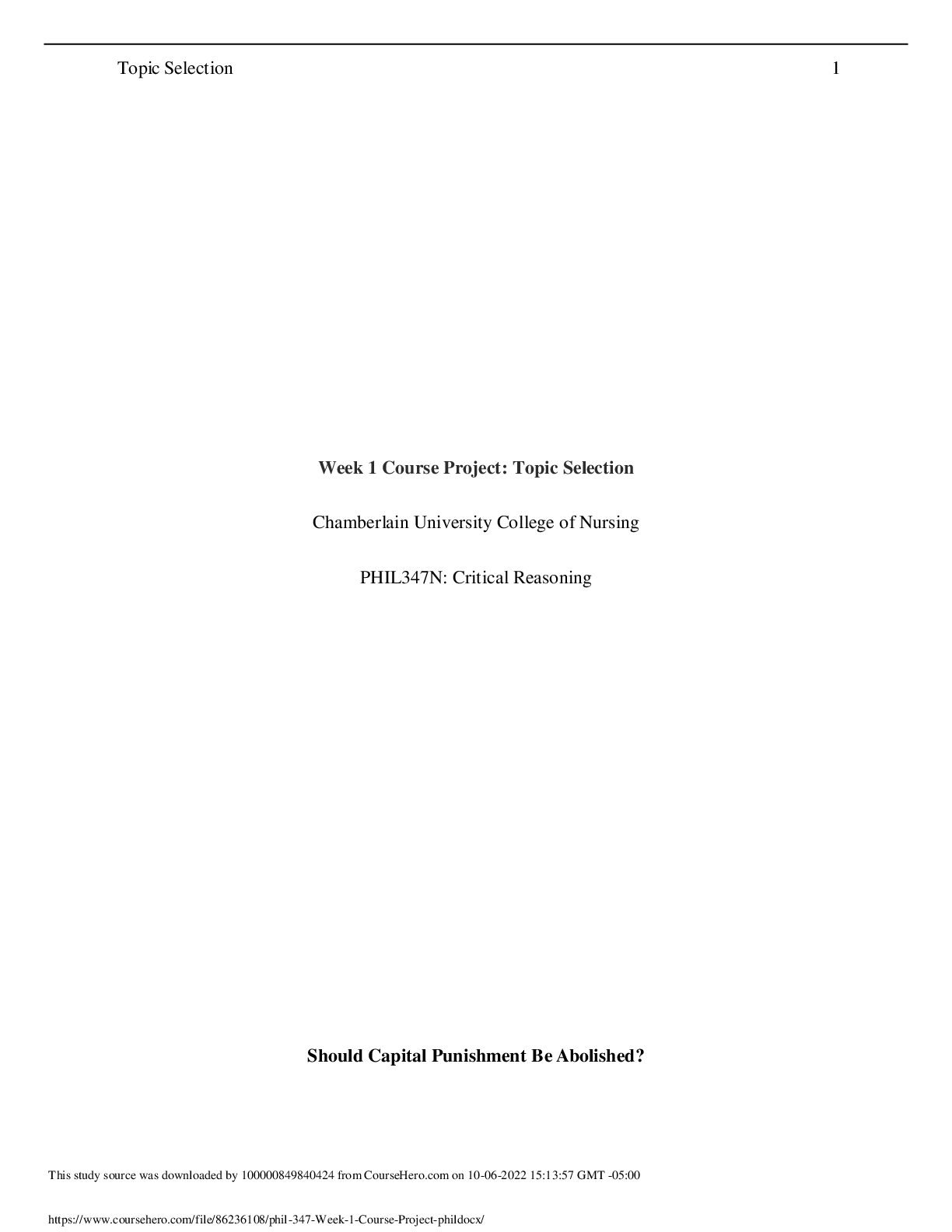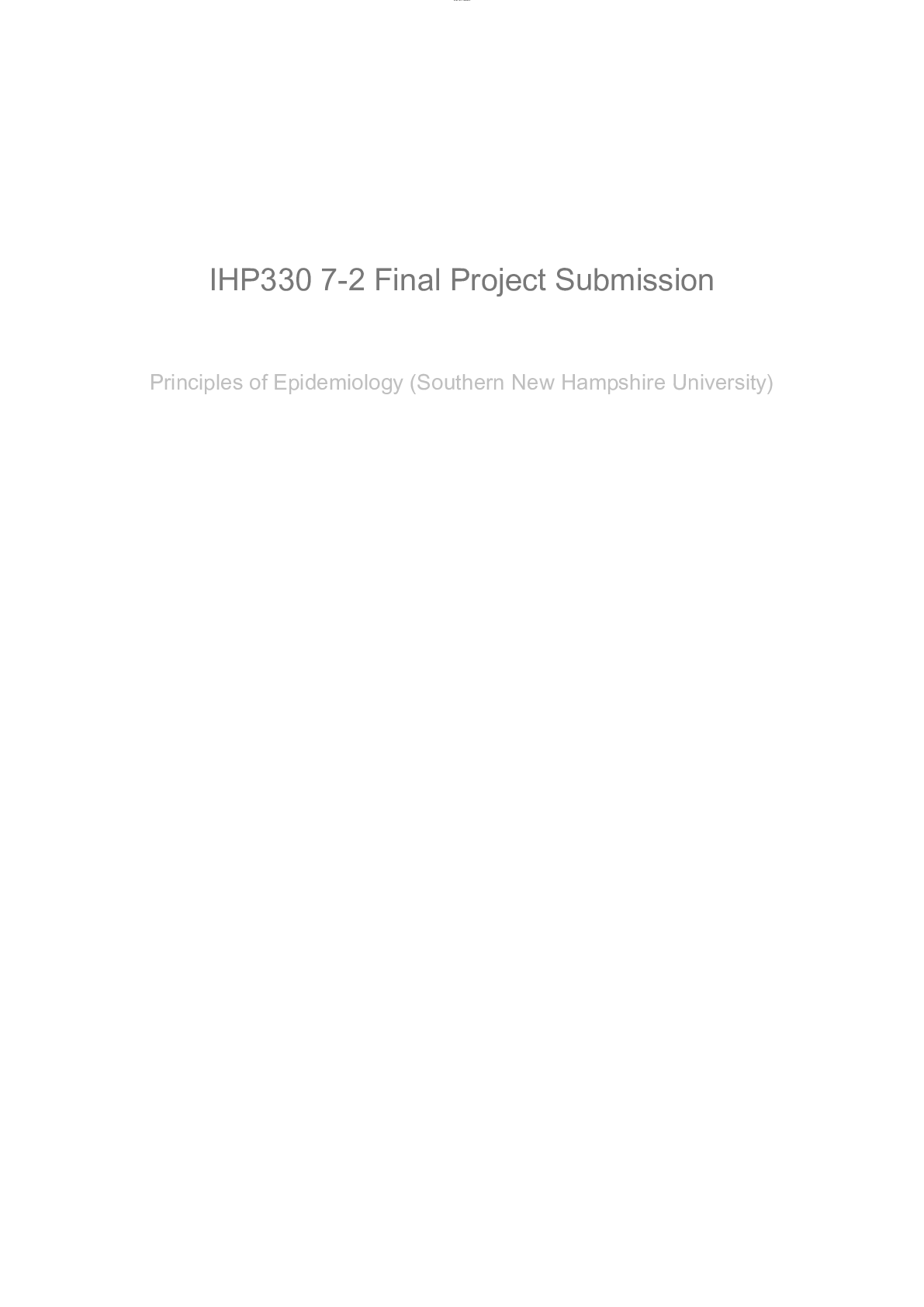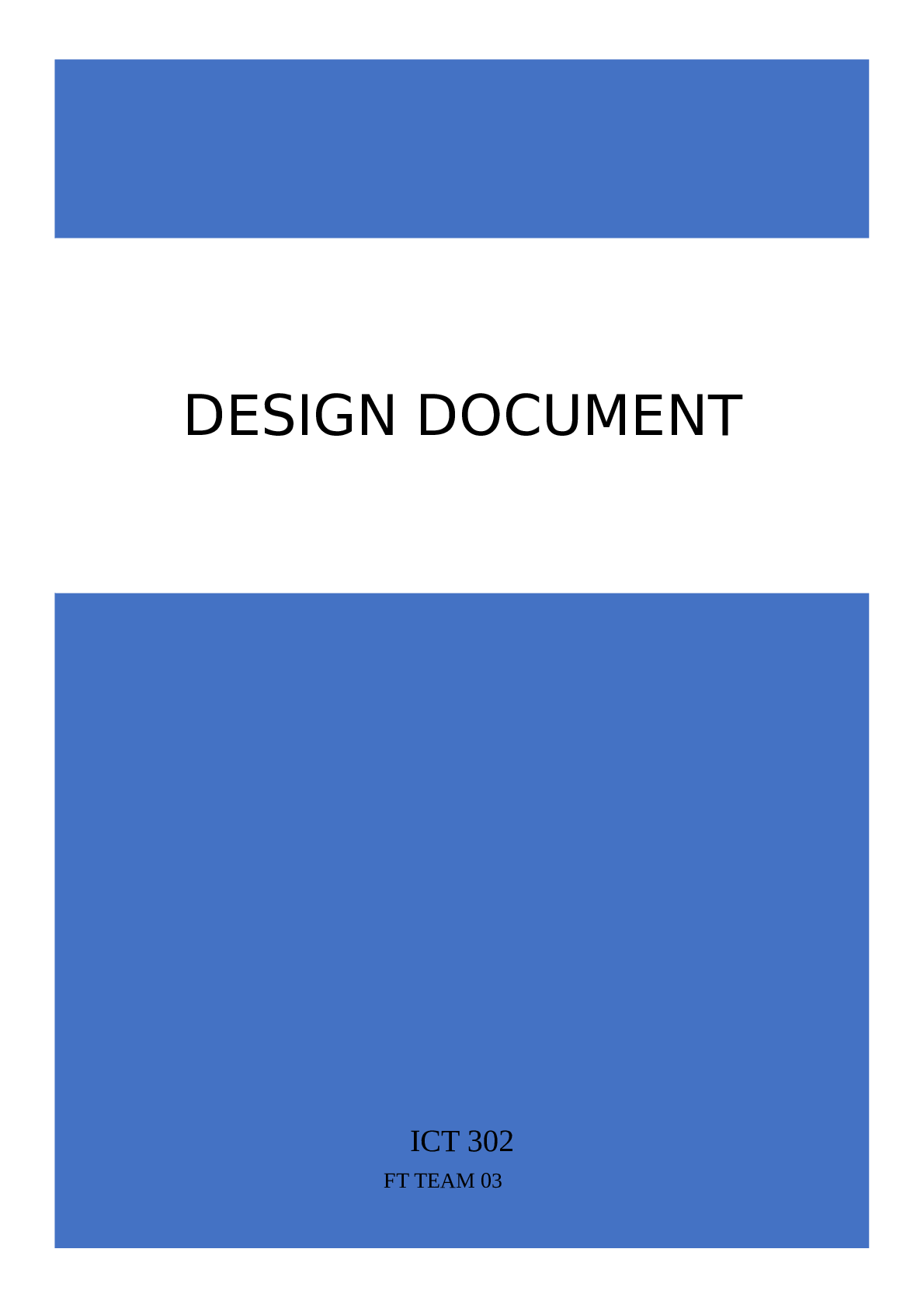Computer Networking > PROJECT FINAL > NETW-583 Week 1 Course Project: Toyota Technology Management Strategy | Download To Score An A (All)
NETW-583 Week 1 Course Project: Toyota Technology Management Strategy | Download To Score An A
Document Content and Description Below
DEVRY UNIVERSITY: KELLER GRADUATE SCHOOL OF MANAGEMENT NETW-583 Strategic Management of Technology Course Project: Toyota Technology Management Strategy ... Toyota Technology Management Strategy Introduction Technology-driven firms are driven by three critical and interrelated activities: planning, strategy, and operations. These activities are carried out within an organization for different purposes and usually stem from different motivations. A major motivation for engagement in any of the above activities is the need to obtain a competitive advantage over similar players in the industry. Strategy, as dealt with in this paper, stems from the intent to create and manage long- term direction for a given firm. For instance, a strategy may define a particular technology, service, or a commodity that a given firm purposes to develop or modify to meet the demands of the market (Fréry, 2006). Technology management, on a more specific exploration, involves the definition of a new technology or modification of existing ones with the aim of reducing cost, meeting new demands, increasing efficiency, and creating competitive advantages among other motivations. After the definition of a given technology, downstream events in management include the development of assessment measures to determine feasibility, cost measures, resource identification and allocation, development and maintenance, among other activities. In this case, the technology being assessed is that of the vehicle-manufacturing industry, taking into consideration Toyota Motors Company. The vehicle manufacturing industry is driven by technology for manufacturing vehicle parts and assembling to come up with the finished products for sale. As such, there are different dimensions of technology management that can be explored within the industry. In this case, however, Toyota Motors Limited will be explored for the development of technology strategies that deal with efficient fuel consumption and environmentally friendly technology as regards the same. Strategy Toyota Motor Corporation is a Japanese-owned multinational company whose headquarters are located in Toyota, Aichi, Japan. Toyota Motor Corporation was founded in 1937 by Kiichiro Toyoda and has grown to become the 13th largest company in the world as of 2016 when analyzed regarding the generated revenue. The company is predominantly involved in the development of automotive vehicles and is ranked as the largest of the vehicle manufacturers. The company uses manufacturing and assembling technologies to come up with the different products that are produced in the market. The company has been producing predominantly fuel- dependent vehicles before the introduction of hybrid electric vehicles in 1997. The company’s place in the vehicle manufacturing and production industry has been cemented over the years, albeit the presence of stiff competition from other industry players that include General Motors and Volkswagen. To possess a competitive advantage over these companies, Toyota Motor Corporation needs to enact an effective technology management system. The automotive industry is plagued by a number of challenges that have weighed down advancements regarding competitive advantages. The industry has experienced massive globalization since the beginning of the twentieth century, a factor that has resulted in the escalation of utilization of fossil fuels. Additionally, expansion of the industry has led to an increased number of vehicles that can be reflected in the increased demand and utility of fossil fuels. These dimensions converge at three crucial challenges for the automotive industry. First, there is a high level of uncertainty regarding the source of future petroleum supplies due to the fact that fossil fuels are exhaustible. Secondly, there are concerns over the role played by carbon dioxide emission from the conventional use of fossil fuels in the development of global warming. Global warming has become an international issue of concern due to its impact on the livelihoods and habitats of living beings. Increased air pollution caused by vehicles consuming petroleum products has been a cause of worry to humans. With these challenges in mind, automotive companies can only place themselves in positions of competitive advantage if the limitations are properly handed. To handle the limitations, however, companies have to examine and come up with viable solutions to the problems. Being the largest vehicle manufacturer and producer, Toyota Motor Corporation needs to take center stage in utilizing technology management strategies to facilitate the creation of alternative sources of energy and reduce the hazardous effects conferred to the environment by their products. As such, this paper proposes a technology management system for Toyota Motor Corporation that emphasizes on efficiency through energy conservation, diversification of fuel sources, and increasing the efficiency of and numbers of green vehicles. Energy conservation involves the creation of products that utilize fuel efficiently. There are a number of ways that can be used to increase the efficiency of fuel utilization in the vehicles. There are two basic techniques that can be used to increase the efficiency of fuel consumption. The first technique involves improvement of the powertrain efficiency in such a way that ever fuel drop participates in the creation of engine revolutions and delivers energy efficiently to the wheels. These aspects can be driven by technology that increases the thermal and drivetrain efficiency. On the other hand, efficiency can be improved through the reduction of running resistance. Here, technology can be deployed that covers the reduction of air resistance by creating more streamlined and lighter but stable units. The alternative sources of fuel that can be utilized include electricity, hydrogen, biofuels, and natural gas. Core Competencies Toyota Motor Corporation is the leading vehicle manufacturer and producer in the world. As such, the company possesses a number of core competencies that can be used to leverage energy conservation technologies, diversifying the sources of fuel, and increasing the manufacture and efficiency of the green vehicles. There are several factors that underlie the core competencies within Toyota Motor Corporation. The company size has been a source of financial incentive over the years, leading to the generation of high revenues from car sales and services. As of February 2016, the company emerged as the 13th in the rank of the largest companies as a function of the amassed revenues. As such, Toyota Motor Corporation possesses the advantage of huge amounts of capital that can be used to facilitate new developments in the industry. Apart from the capital competencies, Toyota Motor Corporation is a company that runs on a unique production system that differentiates it from competitors in the industry. The Toyota Production System (TPS) is a core competence that cannot be replicated by other players in the automotive manufacturing and producing industry (Morgan & Liker, 2006). The company uses a production system termed as lean manufacturing that is based on the core philosophy of the organization. The company has since drafted principles under the “Toyota Way” framework to guide the employees in performing activities. The components of the “Toyota Way” include long-term forecast in decision-making, problem-solving, value addition to the organization, and recognition of the fact that organizational learning is driven by continuity in dealing with root challenges. The philosophical underpinnings are further reflected in the production system which provides the company with the ability to leverage technology and increase the efficiency of fuel consumption, produce vehicles able to use alternative sources of energy, and massive production of green automobiles (Morgan & Liker, 2006). Among the company principles are the utilization of a pull system that reduces overproduction, creation of a continuous manufacturing process that brings any challenges to the surface and enables their handling, thorough testing of technology, and the development of reliable and exceptional teams to help with the carrying out of production activities. The Kaizen principle, for instance, has been a key addition to the attainment of the core competency of operational uniqueness. The kaizen principle lays emphasis on continuous improvement throughout the manufacturing processes. Here, the manufacturing processes are usually halted in the case of a mistake and started all over again (Morgan & Liker, 2006). Through this strategy, the company builds manufacturing processes that improves on a daily basis through increasing the accuracy of the personnel and improving the automated processes to meet the demands of the consumers. The manufacturing competency means that the adjustment of the manufacturing process into fuel-efficient automobiles or those using alternative sources of energy would be best handled in this company as opposed to the competitors that lack the same thoroughness. In terms of the creation of the green vehicles, Toyota Motor Corporation possesses the core competency of having the experience of almost two decades since the release of the first hybrid vehicle in 1997. Using the Kaizen principle of continuous improvement, the company has advanced the technology of the hybrid vehicles. As such, the company can invest capital to better the technology and increase the number of units produced. The impact of green vehicles on increased efficiency and reduced dependence on fossil fuels can have a significant impact if there is increased utilization. The efficiency of the vehicles in utilizing alternative fuels can be facilitated by thoroughness in development using the TPS. Industry Dynamics The automotive manufacturing industry is a highly competitive one (Rajamani, 2011). Giant companies include Toyota, General Motors, and Volkswagen among others. These companies are majorly multinational, operating in many countries to capture the global market. The automotive industry is driven by vehicle manufacturing and production technology. Here, the manufacturing involves the different components that make up an automobile. These parts may include the automobile engine, the fuel utilization and energy transmission channels, and propelling mechanisms among other parts. The manufacturing of these parts requires thoroughness and the application of efficient techniques. Companies that possess a competitive advantage in the manufacturing process are those that utilize efficient techniques to develop the different parts and assemble them into the finished products. Innovation in technology has been a driving incentive for improvements and the development of competitive advantages in the industry. The demands of the consumers are varied as well as being dynamic in nature. As such, the industry has evolved to reflect the current demands of consumers. Automobiles may be varied in size, speed, shapes, and many other perspectives and the development is tied to these perspectives. As such, companies study the trends in the industry before embarking on the production dynamics of the automobiles. A crucial aspect of the industry dynamics has been the emphasis from consumers and other stakeholders on making automobiles that are responsive not only to the needs of the users but to the environment. Global warming has emerged as a leading concern for the development of automobiles. Fossil fuels have been the primary source of energy for these automotive vehicles. The issues surrounding the use of fossil fuels have expanded beyond the case of pollution and environmental pollution. A big concern concerning the utilization of these fuels has been the worry that the fuels may become exhausted with time as they are non-renewable. There has been an increase in the number of vehicles running on fossil fuels since an early twentieth century, a factor that has led to an increased exploitation of the fuels obtained through mining activities. The rate of exploitation is proportional to the probability of these sources becoming exhausted. As such, an aspect of the automotive industry dynamics is the search of alternative but efficient sources of energy for running the automobiles. Additionally, there needs to be increased efficiency in the utilization of the fossil fuels currently used in the powering automobiles. The dynamics mentioned in the above sections present a challenge to the conventional systems of operation in the automotive industry. As such, the need to initiate and manage technology strategies aimed at increasing consumption efficiency and utilizing alternative energy sources need to be developed. Toyota, being the largest producer of vehicles in the world, is one such company that needs to take the creation of an efficient technology in consideration. Fuel efficiency can be generated through the creation of technology that reduces wastage of energy through transmission channels, making sure that every drop of fuel counts. Here, automobile companies can lead to a reduction in the amount of energy consumed and as a result reduce the exploitation of fossil fuels. Additionally, automobile companies can build technology that enables the efficient use of alternative sources of energy such as hydrogen, biofuel, natural gas, and electricity. Once developed, the systems should allow for the utilization of these sources and facilitate the functioning of the automobiles in a similar manner to the fossil-fuel driven vehicles. The technologies for increasing efficiency and running automobiles on alternative sources of energy are the most suitable in dealing with the challenges that arise from the consumption of fossil fuels. First, increasing efficiency through bettering the thermal and drivetrain efficiency reduces the amount of fuel consumed. Reduced consumption of fossil fuels means that there will be fewer emissions and pollution of the environment. Additionally, users of the automobiles will pay less for fuels. The development of automobile technology enabling the utilization of an alternative source of technology is essential in reducing the environmental impacts associated with increased emissions from fossil fuels. Electric cars provide zero emissions while those relying on gases like hydrogen and biofuels release environment-friendly compounds. Technology Sourcing and Internal Innovation The source of the technology for increasing efficiency can be sourced from within the company or through collaboration efforts with the firms that are concerned with similar practices. Toyota Motor Corporation is a huge company that holds a deep credibility regarding the development of technically-equipped personnel. As such, a large part of the workforce has to come from within the company. The experience of a majority of the personnel in the company provides an incentive to their inclusion in the development of efficiency technology and coming up with technology that can be run by alternative sources of energy. The Toyota Production System is a crucial part of the success enjoyed by the company over the years (Morgan & Liker, 2006). The Kaizen principle, for instance, has been mentioned as one of the major driving forces behind the success of the company production processes. As such, internal sourcing of the workforce will be an added advantage. However, internal sourcing of employees may not satisfy the entire development process of the technology. Here, it would be imperative to note that the familiarity of the employee with a number of perspectives may be inadequate. For instance, the use of alternative sources of energy may be problematic to the employees accustomed to the conventional fossil fuel systems. As such, there will be a need to include experts from different fields that include those conversant with the combustion mechanisms of the different alternative sources of energy. Apart from the personnel, there will be a need to use different technologies to develop and manage the new technology strategy. In this case, Toyota Motor Corporation can rely on its production process to produce these technologies. The numbers of requirement for the development of the technology are many. Here, the company needs to purchase new systems and design new production processes for the development of automobiles that rely on alternative sources of energy. Om the other hand, the company needs to develop modified systems for the development of the most fuel-efficient automobiles. Here, two different strategies can be adopted. The purchase of new technology systems for the development of automobiles that use alternative sources of technology can be quite expensive for the company. Given that many of these products require a trial period, outsourcing of the technology would serve as the most suitable choice (Novak & Stern, 2008). Here, Toyota Motor Corporation would contact companies that can develop pilot technology from the blueprint of the provided technology. Additionally, the company may seek collaboration with those interested in the development of similar technologies. Here, Toyota Motor Corporation can engage other vehicle development companies sharing the interest of engaging in the development of similar technology. The collaboration may be founded on the basis of boosting the financial capability of each organization. Additionally, engaging in outsourcing practices is crucial in reducing operational risks. It is important, however, to note that Toyota Motor Corporation would more likely depend on the internal innovations rather than the use of outsourcing. The size and technological innovation capabilities of the company provide a bearing that reflects more on the utilization of the internal resources than reliance on external sourcing. Additionally, the credibility of the company’s production system makes it more reliable than other processes outside the company. As such, Toyota Motor Corporation may predominantly rely on internal sourcing and innovation rather than on outsourcing and collaboration patterns of production. Production Development Strategy The development of the technology strategy stems from the earlier mentioned challenges in the automotive industry. Toyota Motors belongs to the automobile manufacture and production industry, faced with the challenge of pollution and possible exhaustion of the predominantly used fossil fuels. The development and management of the mentioned technology are, therefore, pegged on creating and diversifying the development of solutions to these challenges. The development of the technology strategy follows a number of concepts. First, the development of the technology strategy relies on the use of workforce from within and without the organization. Toyota employees possess both the expertise and the culture that is required by the company to accomplish new and improved technology dimensions. The creation of energy efficient vehicles does not deviate much from the existing manufacturing processes. As such, most of the employees will be involved in the implementation of the efficiency technology. Here, the company will modify the transmission mechanisms within the automobiles to reduce the wastage of energy through the processes of heat, incomplete combustion, or underutilization of fuel. These are main challenges that lead to the waste of the fuel resources during transmission. To make the systems more efficient, the company will embark on modification of the manufacture and production processes. Toyota has built a strong reputation as one of the companies with a successful manufacturing procedure that involves the following of a unique production culture. With this provision being a core competency of the company, the production processes of the technology strategy will follow the same pattern. The company production system will be relied upon in the development and incorporation of fuel-efficient technologies in automobiles. Here, the company will concentrate on the development of the technologies that can be added to the transmission systems and the engine to make sure that there is maximum utilization of energy sourced from the fuel without wastage. The internal team, however, will be assisted by experts sourced from outside the firm. The development of the technology requires the participation of individuals with adequate knowledge of the operational modes of the technology. Additionally, some of the systems require the presence of information technology experts that are not specifically tied to the development of the technology for automobiles. The personnel will then work in unison to come up with the different technologies that have to be incorporated in the engine and transmission systems to increase the efficiency of the automobiles. Once developed, the technology has to be applied on a pilot scale to test for the effectiveness and assess for the presence of challenges associated with the modifications. Once given a go ahead, the technology may then be produced in large scale and fitted into new or existing vehicles with the motive of increasing efficiency of fuel consumption. The other production concept is that of creating technology systems to be fitted into the automobiles that will use alternative sources of energy. Here, the company may find it hard to rely on its production systems and engage primarily in outsourcing (Novak & Stern, 2008). Toyota’s production system is based on the production of the ordinary vehicles that make use of fossil fuels. However, the company started producing hybrid vehicles in the year 1997. However, much of the alternative sources of fuel remain untested. The company, therefore, lacks a comprehensive system for the development of the new perspectives in technology. However, the production of the technology can still be dependent on the Toyota Production System for the articulation of the procedures and incorporation of the strong company culture. The absence of pronounced systems for the development of the alternative energy technology means that the expenses set to be incurred by the company are high. As such, the company has the choice to engage in outsourcing practices that can be used to facilitate the process. Outsourcing of the technology may be cheaper where the pilot process is carried out in relatively cheaper facilities with the adequate presence of the different requirements. Once the pilot production is deemed successful, the company can then engage in the development of large- scale facilities that can then be used for the production of the technology. The essential requirements here include personnel with experience on the combustion and transmission mechanisms of energy in alternative sources of energy like natural gas, hydrogen, and biofuels. For electric cars, expertise is required from electrical engineers and specialists that deal with the transmission of electrical energy to generate the propelling force in automobiles. Technology Protection After the technology has been developed, the last step will involve protecting it to ensure that it remains only under the ownership of Toyota Motor Corporation. To do so, the company can obtain a patent for the technology. Here, two different technologies have been developed. The first technology creation is that of improving the efficiency of fuel consumption through incorporating innovations at the levels of the engine and the transmission channels. The second technology creation is that involving the design of an automobile system that makes use of alternative sources of energy. Both of these technologies require to be protected from falling into the hands of the competitors who might leverage their competitive position without financial input (Randau & Medinskaya., 2015). A patent can be defined as a monopoly right that is issued to an inventor from the relevant authorities. A patent is issued on the condition that a new and useful creation has been made. The technologies described above fall under this category, meaning that the company possesses the right to the acquisition of a patent. Once a patent is obtained, all other parties, including competitors, are barred from dealing with the technology for a limited time. For instance, a patent for the above technologies will ensure that no parties can use, manufacture, sale, or copy the concepts until the expiry of the patent. A patent is the most suitable of the protection policies that can be employed in conferring security to the intellectual property of the company (Randau & Medinskaya., 2015). Additionally, the company may engage in copyright protection of the documents that describe the technology. However, copyright may not be secure enough in the modern era where access to information has become extremely easy. Lastly, the technology innovations can be protected using trade secrets. Trade secrets entail the information that a company intends to maintain within the organization as exposure might weaken the competitive advantage. Toyota Motor Corporation can still use trade secrets to ensure that the company protects the information and enjoys a competitive advantage over other players in the automobile industry ((Randau & Medinskaya., 2015). References Fréry, F. (2006). The fundamental dimensions of strategy. MIT Sloan management review, 48(1), 71. Morgan, J. M., & Liker, J. K. (2006). The Toyota product development system (Vol. 13533). New York: Productivity Press. Novak, S., & Stern, S. (2008). How does outsourcing affect performance dynamics? Evidence from the automobile industry. Management Science, 54(12), 1963-1979. Orsato, R. J., & Wells, P. (2007). The automobile industry & sustainability. Journal of Cleaner Production, 15(11), 989-993. Rajamani, R. (2011). Vehicle dynamics and control. Springer Science & Business Media. Randau, H. R., & Medinskaya, O. (2015). Protecting Intellectual Property. In China Business 2.0 (pp. 145-153). Springer International Publishing. Tollefson, J. (2008). Car industry: charging up the future. Nature news, 456(7221), 436-440. [Show More]
Last updated: 1 year ago
Preview 1 out of 15 pages
 (1).png)
Reviews( 0 )
Document information
Connected school, study & course
About the document
Uploaded On
May 06, 2022
Number of pages
15
Written in
Additional information
This document has been written for:
Uploaded
May 06, 2022
Downloads
0
Views
64
 (1).png)














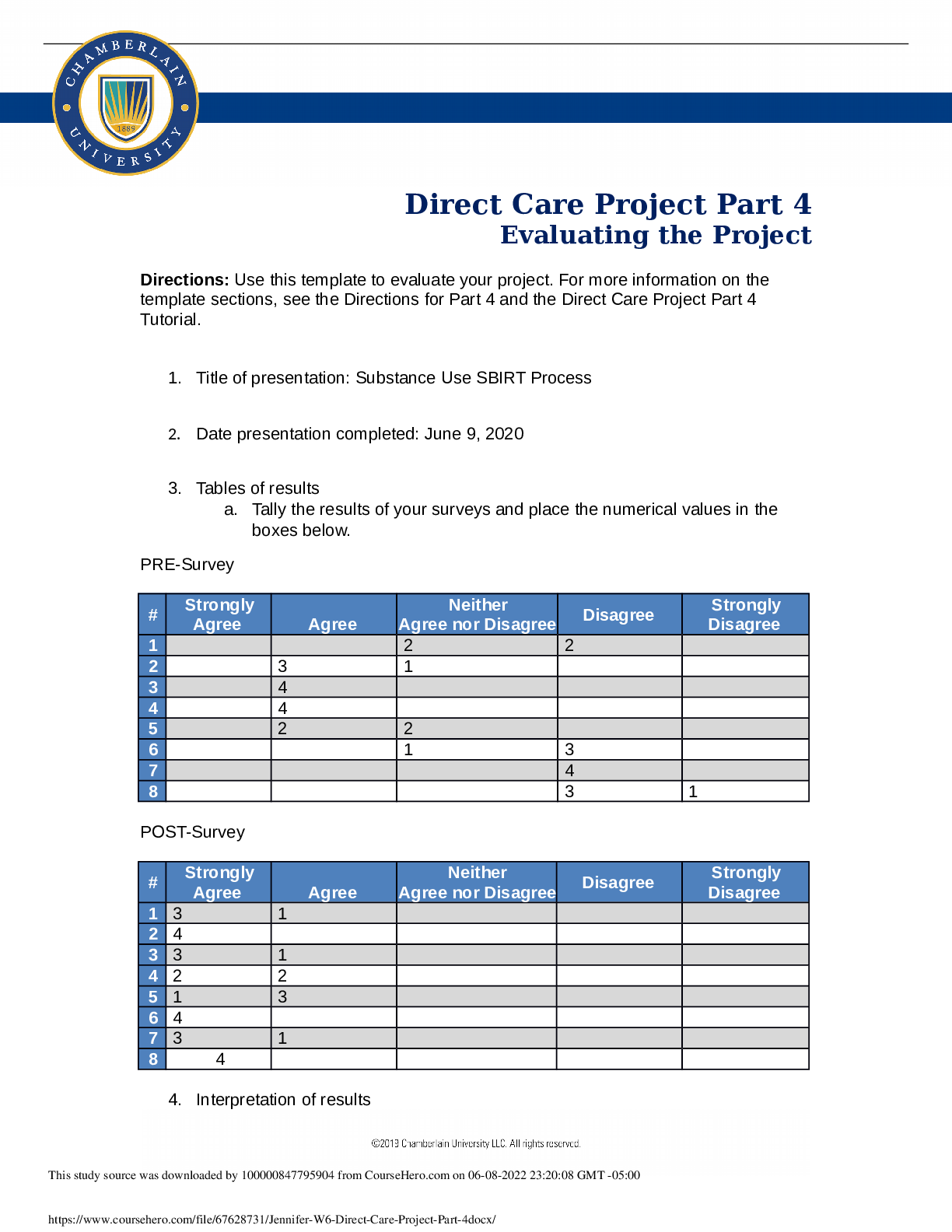
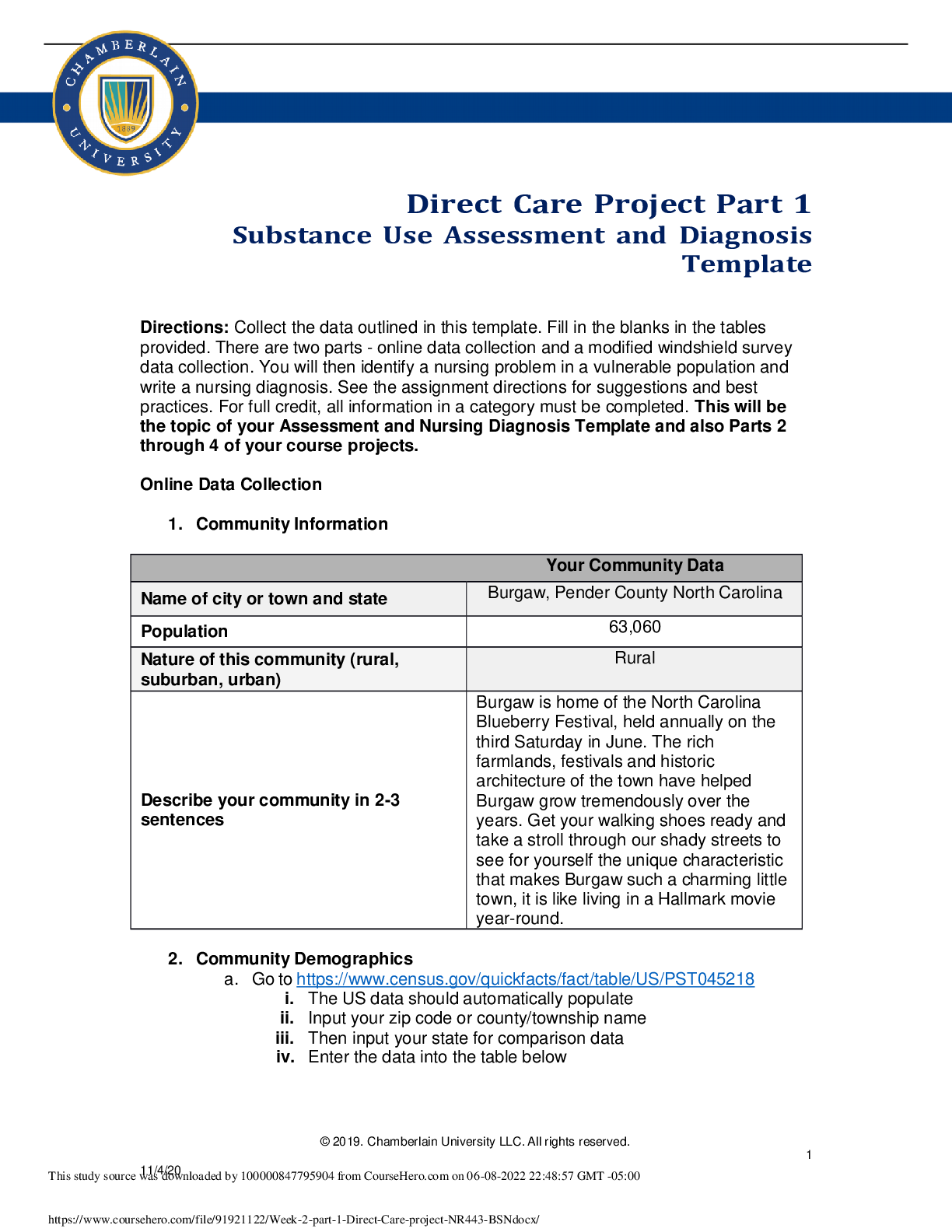
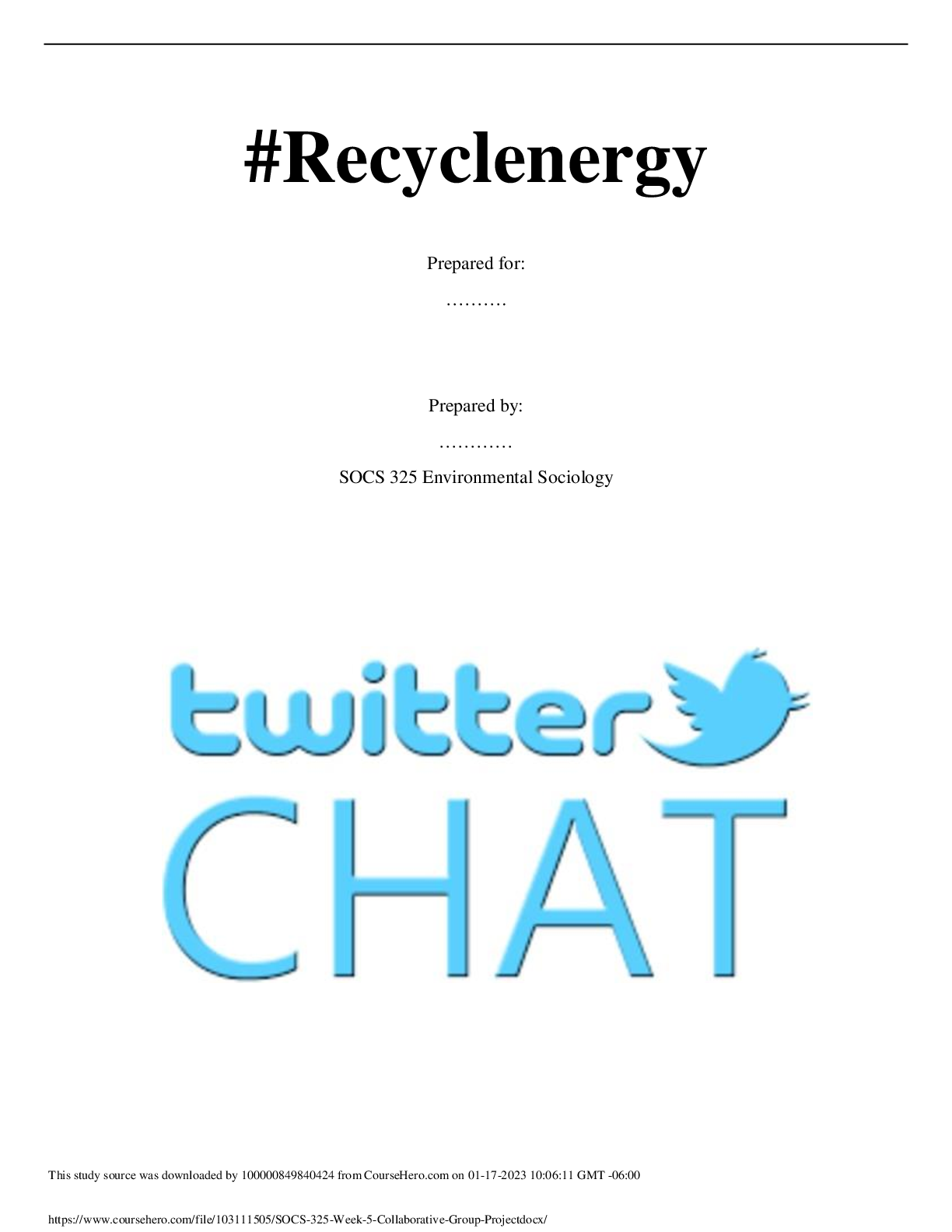
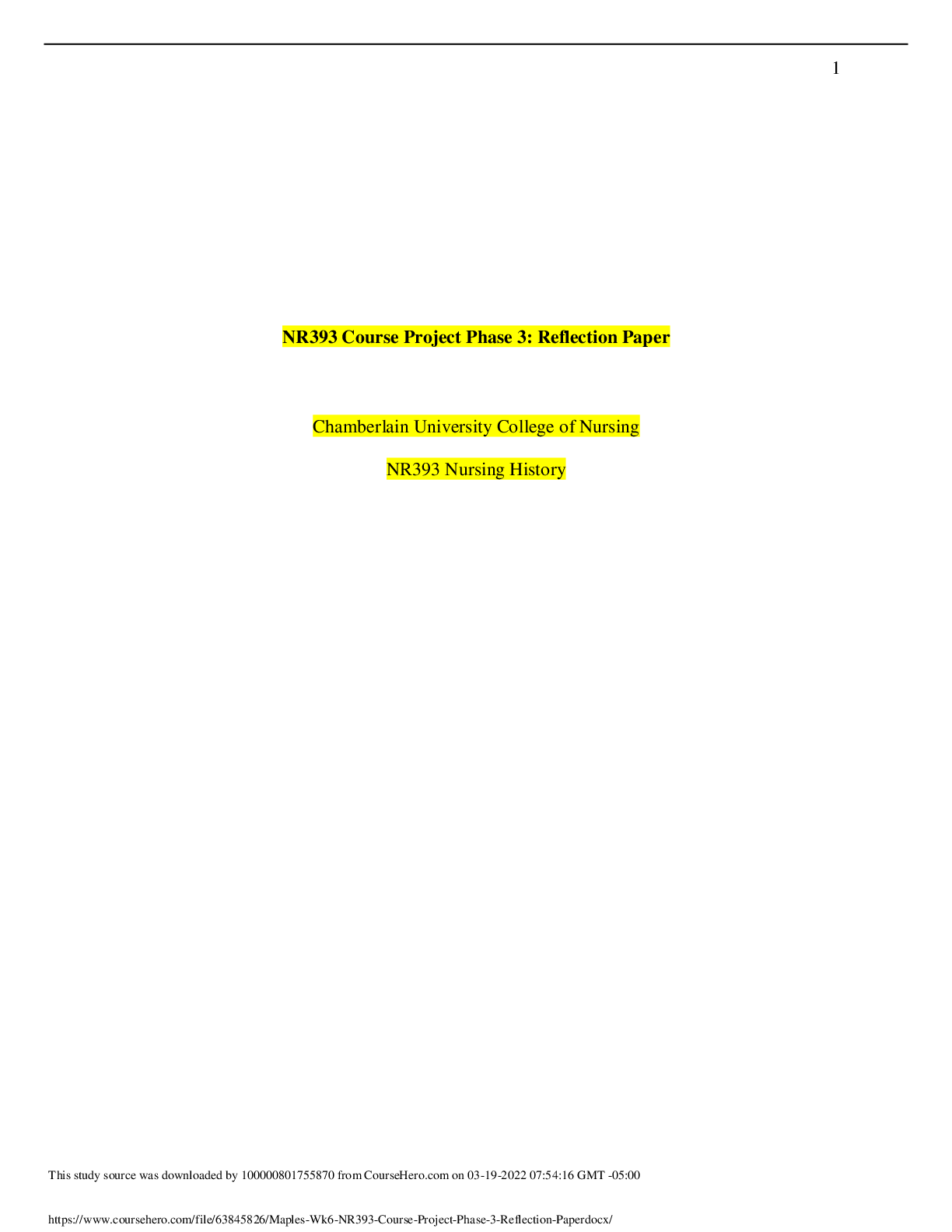
.png)
